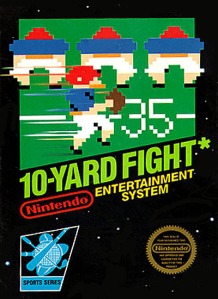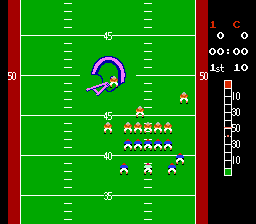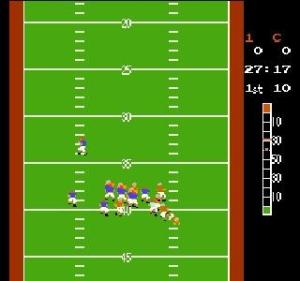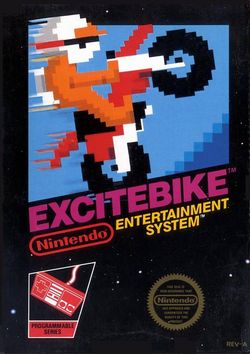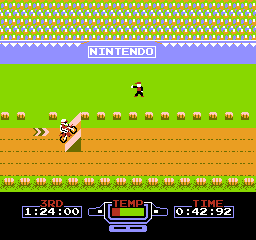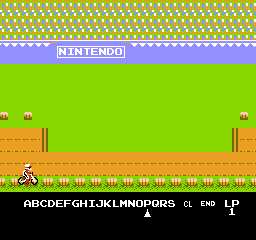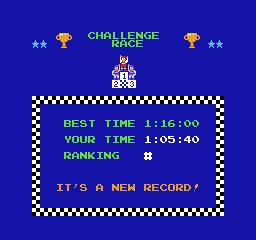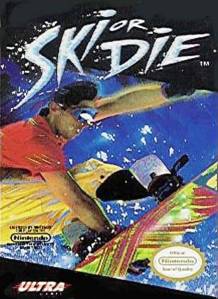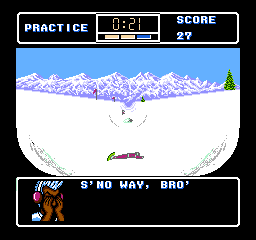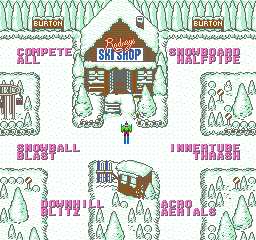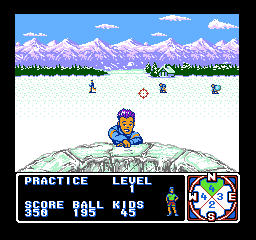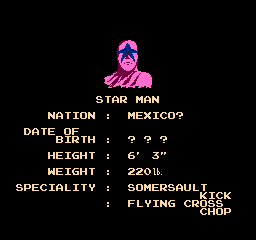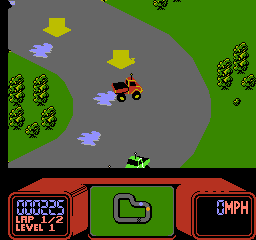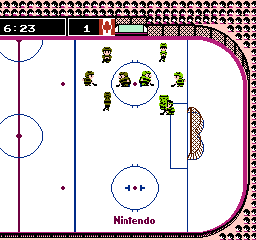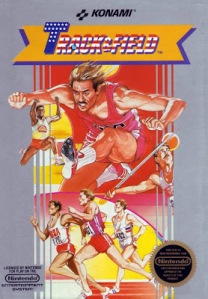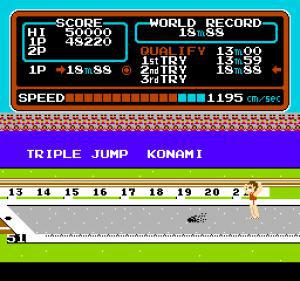As you may recall from the Ski Or Die review, growing up in a suburban town there’s only so much sports you’re exposed to, the regular culprits being Football (Soccer for the readers across the pond), Rugby and at times the quintessentially middle-class Golf and Rugby. So imagine the surprise and excitement when suddenly as if being blindsided, American Football was introduced to our screens. Reminiscent of rugby, but with a lot more crash bang wallop and rules that were much more complex to fathom with play being stopped every few seconds, as per all good sports there was a glut of video games to tie in with this – the most common games being John Madden. But way back before then, Nintendo unleashed their own American Football game onto the NES to unsuspecting British gamers in the form of 10-Yard Fight, so how does this game fare up now – is it more of a crash, a bang or just want to wallop with gusto and might?
10-Yard Fight is an American Football game which was the first semi-realistic game to be made especially after the Atari era of gaming. It started life as an arcade in 1983, but was ported over to the NES in 1985 and was released as a black box game in December of 1985. The game is viewed form above, a sort of eye-in-the-sky viewpoint that oversees the action rather than a horizontal viewpoint such as other black box sporting games such as Excitebike and Soccer. Although the rules of American Football are long and require further reading that what this review can muster (as always Wikipedia would be a good start) the general idea of the game is to run with the oval-shaped ball from one side of the pitch to the other, scoring a touchdown to amass points, whilst all the while being thwarted by the opposition who will do anything to stop you scoring a touchdown. So yes, it is similar to rugby and although what has been described is distilled to its simplest form, the purist’s will vouch it’s two completely different played sports. Hmm….
So turning on the cartridge as with the other black box games your straight at the menu, no messing around however with a distinct lack of sound, nothing jovial to welcome you to the game. You can choose between 1 or 2 players, so you can slug it out alone or grab a buddy and pretend you’re having your own Superbowl. If you choose 1 player, you then choose your difficulty of the CPU, starting with High School Team working up in difficulty to the most hardest being Super Bowl Team. Should you win your match the next game you play is at the next difficulty, unless your hardcore enough to start on playing on the hardest difficulty – then your just epic. However you don’t select a team like in later American Football games such as the Miami Dolphins or the Pittsburgh Steelers, when you pick your difficulty you then go straight into the game. The opposition kicks off and away we go.
The graphics of the game do their job without getting into the difficulties of trying to create crowds and make it overly complicated. It looks like a typical American Football field pitch with the green grass and the markings in the ground at every 10 yard intervals. What is also a nice tough is that on the right hand side of the screen you have a mini map which shows not only relevant markings and the touchdown points in red and green (depending on which colour side you are) but also where on the map you are and where the action is. It sound’s silly to include that as a feature but the number of games that have an intelligible map which hinders the player is quite refreshing, especially based on the fact this game was released early in the console’s library. The controls are very simplistic with the d-pad moving your guy and the A/B buttons being used to either throw the ball to one of your teammates should you be attacking, or if defending you control which set of guys you want to move to help defend the opposition from getting past you. It’s touches like this that was enhanced upon for future games but it is nice it was introduced in 10-yard fight which makes you think tactically about what the opposition may be planning up their sleeves. In terms of music there really isn’t any aside from when the game kicks off and at intervals, it’s solid enough but won;t win any Grammy’s for it, however it does it’s job. The sound effects do sound something from an Atari as in when the balls fly through the air and when your tackled, it reminds you of white noise from a TV that doesn’t have the channel tuned in properly so you might want the radio on when your playing.
So all in all, 10-Yard fight sets the scene well for future American Football games, it sets a precedent for future American Football games to build upon, with the features such as picking different strategies and tactics by playing the different buttons on the controller. There are times when playing that do start to get jarring, for instance when your on the offence and the guy runs across the line of guys before play starts which takes an absolute eternity for him to run past – you can press button to play early but then it tactically is not as astute as it could be. All this time, it drains the time, with every footstep taking a second off the 30 minute accelerated timer that your given per half. It isn’t easy to score touchdowns either even on the easiest setting as when you tackle or when the opposition tackles it is not always guaranteed they will tackle properly and so your man skips right past. It’s pedantic and nit-picking yes however if it was a perfect game it wouldn’t have these faults but then wouldn’t be the grounding to improve on for future releases. Copies are not too expensive, so if you want to see how American football all began on consoles then this is a good start as any and worthy of being in your collection. But maybe your patriotic enough to prefer a good game of Rugby instead – me, I’m off to California see what Games are out there…
Rating – 3 out of 5
